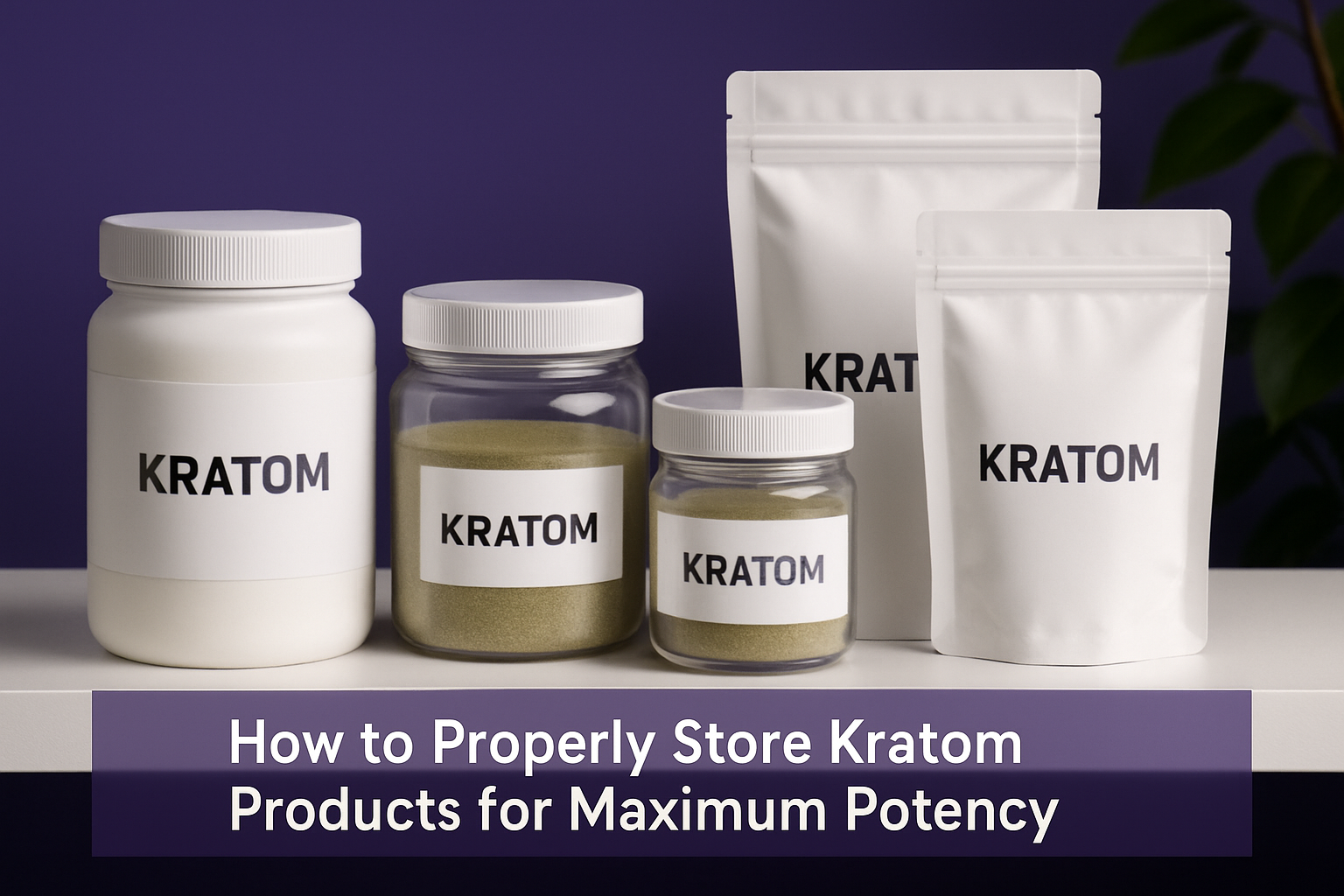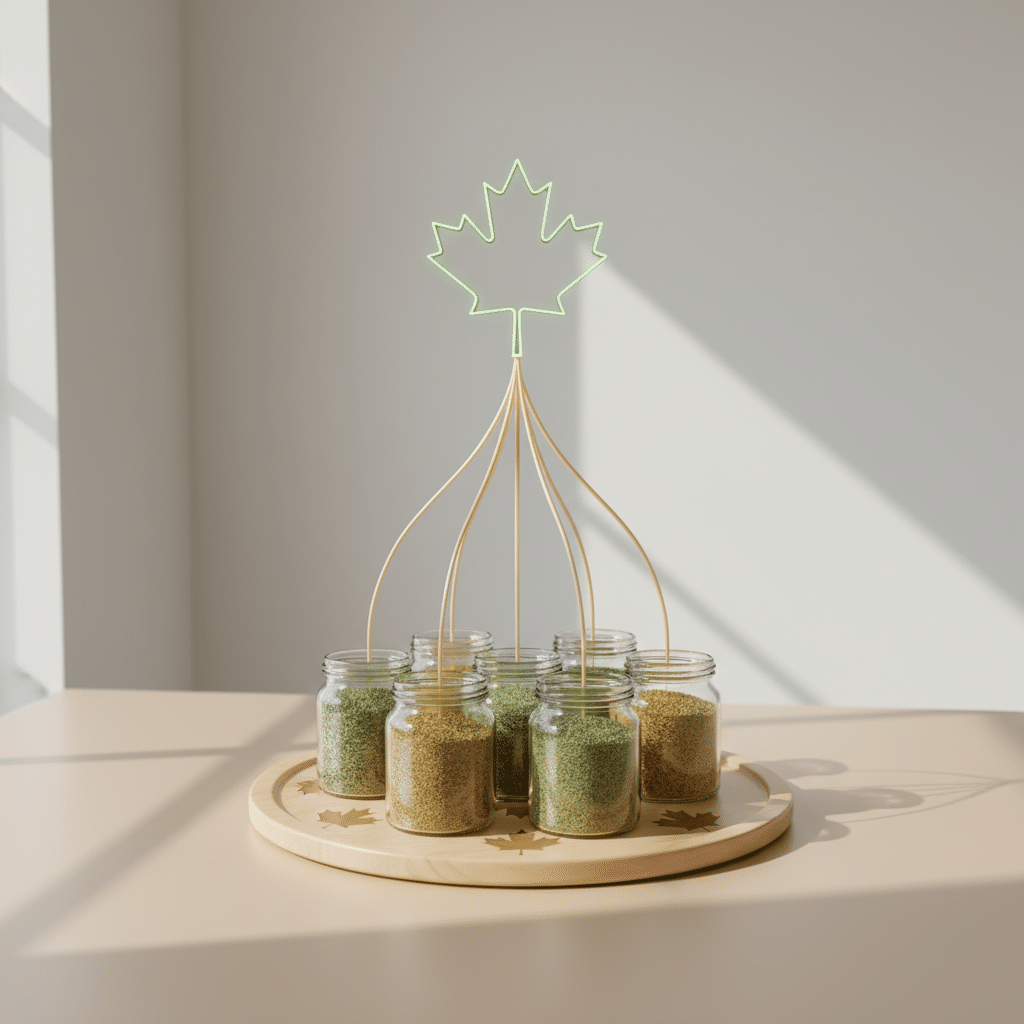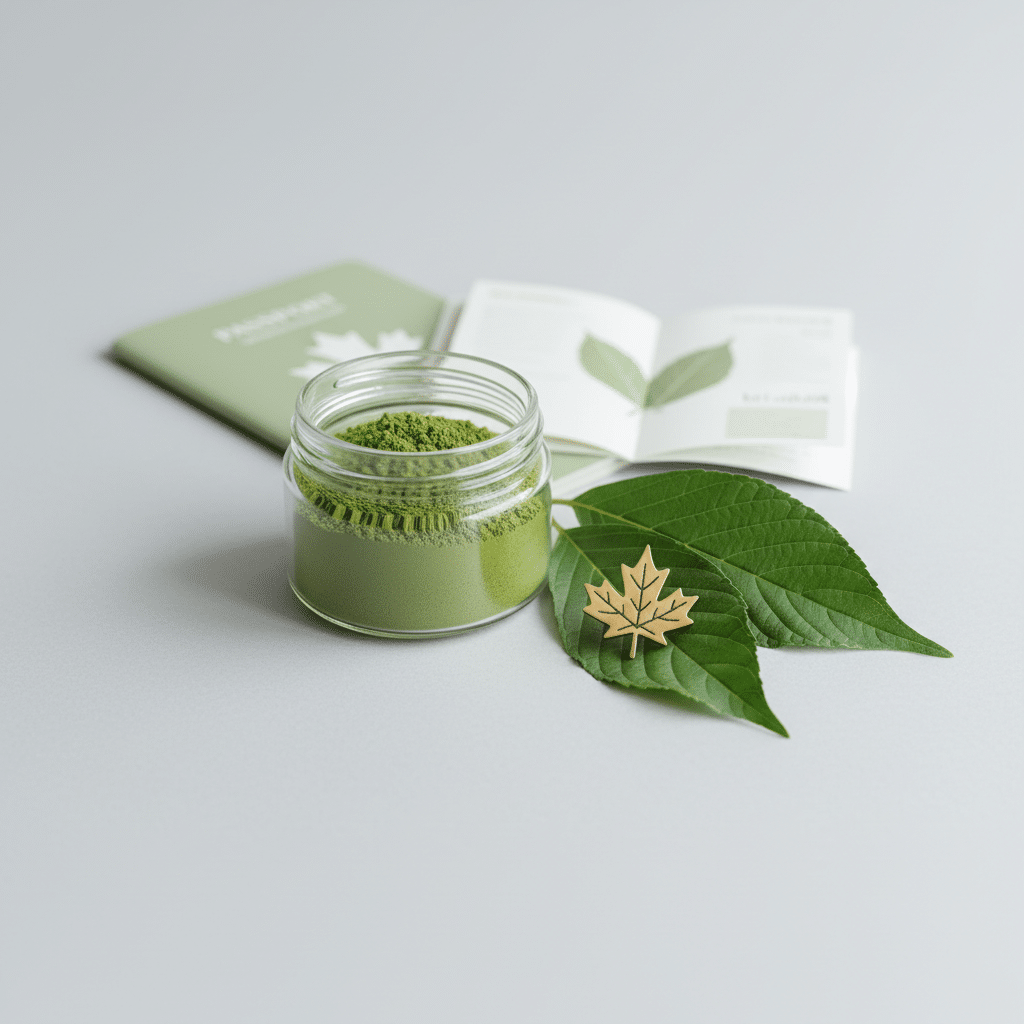
Many kratom enthusiasts overlook one critical factor that determines their botanical experience: proper storage. Research shows that moisture exposure degrades alkaloids within days, yet countless users unknowingly compromise their kratom’s quality through improper handling. Learning how to store kratom properly isn’t just about maintaining freshness—it’s about preserving the botanical integrity that makes your research and examination purposes meaningful.
Whether you’re storing kratom powder or capsules, the wrong conditions can transform premium botanical material into degraded product within weeks. Canadian climate conditions present unique challenges, from extreme temperature fluctuations to seasonal humidity changes that can destroy even laboratory-tested kratom.
Essential Storage Conditions for Kratom Quality
Temperature Control and Climate Considerations
Temperature stability forms the foundation of proper kratom storage. Ideal storage temperatures range from 60-75°F (15-24°C) with consistent conditions throughout the storage period. Fluctuations outside this range accelerate alkaloid breakdown and reduce botanical potency.
Heat sources pose the greatest threat to kratom quality. Storing containers near radiators, sunny windows, or kitchen appliances creates temperature swings that compromise the botanical material. Even brief exposure to temperatures above 80°F can begin degrading the active compounds that make kratom valuable for research purposes.
Canadian homes experience significant seasonal temperature variations. Basement storage often provides the most stable environment, avoiding both summer heat and winter drafts that affect upper floors.
Humidity Levels and Moisture Prevention
Moisture control separates successful long-term kratom storage from rapid degradation. Moisture exposure degrades alkaloids within days, making humidity management absolutely critical for preserving kratom potency.
Humid climates require extra precautions when storing kratom properly. Desiccant packets placed inside storage containers absorb excess moisture that would otherwise compromise the botanical material. Rice-based desiccants work effectively, though commercial silica gel packets provide superior moisture control.
Bathroom and kitchen storage should be avoided entirely. These areas experience humidity spikes from showers and cooking that can quickly saturate kratom powder. Even sealed containers aren’t foolproof against extended humidity exposure.
Light Exposure and UV Protection
UV exposure accelerates degradation of active compounds in kratom, making light protection essential for maintaining botanical quality. Direct sunlight can begin breaking down alkaloids within hours, while even indirect light causes gradual potency loss over time.
Amber glass jars provide excellent UV protection while maintaining visibility of the stored kratom. Clear containers require storage in completely dark environments to prevent light-induced degradation. Opaque containers offer the best protection but make it harder to monitor the botanical material’s condition.
Closet storage works well for most kratom forms, providing consistent darkness while maintaining accessible storage locations. Dedicated storage boxes with tight-fitting lids create ideal environments for preserving kratom’s botanical properties.
Best Containers and Storage Solutions
Airtight Containers vs Original Packaging
Airtight containers preserve freshness 3x longer than loose packaging, making the transition from original containers a worthwhile investment. Most kratom arrives in packaging designed for shipping rather than long-term storage.
Original packaging often uses thin plastic bags that don’t seal completely after opening. These materials allow air exchange that gradually reduces kratom quality. Resealing difficulties with original packaging create opportunities for moisture and air exposure that compromise the botanical material.
Quality storage containers feature tight-fitting lids with gasket seals that prevent air infiltration. The investment in proper containers pays dividends through extended kratom freshness and maintained potency for research purposes.
Glass Jars and Food-Grade Storage Options
Glass jars maintain an inert environment for fragrant kratom varieties, preventing flavor alteration and chemical interactions. Food-grade glass containers don’t absorb odors or release compounds that could affect the botanical material.
Plastic containers may seem cost-effective but can alter kratom’s aromatic properties over time. Low-quality plastics sometimes impart chemical odors that interfere with the natural kratom scent. Glass eliminates these concerns while providing excellent visibility for monitoring stored material.
Mason jars work excellently for kratom storage, offering affordable glass construction with reliable sealing mechanisms. Wide-mouth varieties make accessing stored kratom easier while maintaining airtight conditions between uses.
Vacuum Sealing for Long-Term Storage
Vacuum sealing removes 95%+ of oxygen and moisture, creating ideal conditions for extended kratom preservation. Professional vacuum sealers provide superior results compared to manual compression methods.
Home vacuum sealing systems work effectively for kratom portions used infrequently. Dividing bulk kratom into smaller vacuum-sealed portions prevents repeated air exposure to the entire supply. Each sealed portion maintains optimal conditions until opened for use.
Double-vacuum sealing provides extra protection for valuable kratom varieties. The outer seal protects against punctures while the inner seal maintains the primary barrier against air and moisture infiltration.
|
Storage Method |
Moisture Protection |
Air Exclusion |
Cost |
Convenience |
|---|---|---|---|---|
|
Original Packaging |
Poor |
Poor |
Free |
High |
|
Glass Jars |
Good |
Good |
Low |
High |
|
Vacuum Sealing |
Excellent |
Excellent |
Medium |
Medium |
|
Professional Storage |
Excellent |
Excellent |
High |
Low |
Long-Term Storage Strategies for Different Kratom Forms
Storing Kratom Powder vs Capsules
Powder requires more careful handling than capsules due to its larger surface area exposed to environmental factors. Oxide-proof materials become essential when storing kratom powder for extended periods.
Capsulated kratom benefits from the protective gelatin or vegetable capsule shell that limits air exposure. However, capsules still require proper storage conditions to prevent moisture from compromising the encapsulation integrity. High humidity can soften capsule shells and affect their protective properties.
Bulk powder storage requires different strategies than pre-measured portions. Large quantities benefit from subdivision into smaller containers that limit air exposure during regular access. Frequent opening of large containers exposes the entire supply to environmental conditions that can gradually degrade quality.
Kratom Rotation and Inventory Management
Establishing a rotation system prevents kratom from exceeding optimal storage timeframes. Label containers with storage dates to track aging and prioritize older stock for current use. This first-in-first-out approach maintains consistent quality for research and examination purposes.
Inventory tracking becomes more important for users maintaining multiple kratom varieties. Simple spreadsheets or written logs help monitor storage duration and identify varieties requiring priority use. Quality botanical research depends on using kratom within its optimal freshness window.
Regular quality checks help identify storage problems before they affect entire kratom supplies. Monthly inspections for moisture, odor changes, or color variations catch storage issues early. Storing kratom properly includes ongoing monitoring to maintain botanical integrity.
Freeze vs Refrigerator Storage Options
Freezing kratom can extend storage life significantly when done correctly. However, freeze-thaw cycles create condensation risks that can introduce moisture to stored kratom. Single-freezing works better than repeated temperature changes that create ice crystal formation.
Refrigerator storage offers more accessible temperature control but introduces humidity concerns. Refrigerated environments often have higher humidity levels that can compromise kratom quality without proper moisture barriers. Double-wrapping becomes essential for refrigerated storage success.
Room temperature storage in controlled environments often provides the best balance of accessibility and preservation for most users. Consistent cool temperatures without freezing eliminate condensation risks while maintaining easy access for regular research use.
Storage Tips for Canadian Climate Conditions
Managing Seasonal Temperature Changes
Canadian winters below 50°F increase condensation risks during storage, requiring special precautions for kratom preservation. Cold outdoor temperatures combined with indoor heating create challenging conditions for stable kratom storage.
Basement storage provides natural temperature buffering against extreme seasonal swings. However, Canadian basements can experience humidity issues during spring thaw periods that threaten stored kratom quality. Dehumidifiers help maintain optimal storage conditions during problematic seasons.
Double-wrapping containers in cold climates prevents condensation from forming inside primary storage containers. Inner containers hold the kratom while outer barriers protect against temperature-related moisture formation. This layered approach works particularly well for storing kratom long-term through Canadian winter conditions.
Humidity Control in Different Canadian Regions
Coastal Canadian regions experience higher baseline humidity that requires active moisture management for proper kratom storage. Desiccant packets become essential rather than optional in these environments. Maritime provinces particularly benefit from humidity monitoring equipment that tracks storage conditions.
Prairie provinces deal with dramatic humidity swings between seasons that challenge consistent kratom storage conditions. Spring humidity spikes can quickly compromise kratom stored through dry winter months. Sealed storage becomes more critical in regions experiencing these humidity variations.
Northern Canadian communities face unique challenges with extreme temperature ranges and seasonal humidity changes. Remote areas may lack easy access to specialized storage equipment, making simple glass jar storage with basic moisture control the most practical approach for preserving kratom quality.
Quick Storage Checklist for Canadian Kratom Users:
-
Monitor indoor humidity levels monthly
-
Use double-container systems during temperature extremes
-
Store in basement or interior closet spaces
-
Check for condensation after cold snaps
-
Replace desiccant packets seasonally
Common Kratom Storage Mistakes to Avoid
Many users inadvertently compromise their kratom by storing it near strong-smelling substances. Kratom readily absorbs surrounding odors that can alter its natural aromatic properties. Coffee, spices, and cleaning products stored nearby can contaminate kratom’s scent profile.
Frequent container opening exposes kratom to repeated air and moisture cycles that accelerate quality degradation. Consider dividing large kratom supplies into smaller portions used independently. This approach minimizes exposure frequency while maintaining access to your botanical material.
Temperature shock from moving kratom between different storage environments causes condensation that introduces unwanted moisture. Allow containers to reach room temperature before opening after cold storage. This simple step prevents moisture formation inside storage containers.
Frequently Asked Questions
How long can properly stored kratom maintain its quality?
Properly stored kratom maintains optimal quality for 12-18 months when kept in airtight containers under ideal conditions. Vacuum-sealed kratom can retain potency for up to 24 months. However, quality begins declining gradually after the first year regardless of storage method.
Should I refrigerate my kratom for better preservation?
Refrigeration isn’t necessary for kratom storage and can introduce humidity problems. Room temperature storage in cool, dark locations provides sufficient preservation for most users. If choosing refrigeration, ensure double-wrapping to prevent moisture exposure.
Can I freeze kratom to extend its shelf life significantly?
Freezing can extend kratom storage life but requires careful moisture prevention. Single-freeze storage works better than repeated freeze-thaw cycles. Allow frozen kratom to reach room temperature completely before opening containers to prevent condensation formation.
What’s the best way to store kratom in small apartments?
Bedroom closets or interior cabinets away from kitchen and bathroom humidity work well for apartment kratom storage. Avoid exterior walls that experience temperature fluctuations. Glass jars with tight-fitting lids provide excellent storage in limited space situations.
How do I know if my stored kratom has gone bad?
Signs of degraded kratom include musty odors, color changes, clumping from moisture exposure, or mold growth. Fresh kratom maintains its characteristic earthy scent and consistent powder texture. Discard any kratom showing visible mold or unusual odor development.
Is it safe to store different kratom varieties together?
Storing different kratom varieties together can lead to scent mixing that affects individual variety characteristics. Separate containers maintain distinct aromatic profiles important for research and examination purposes. Label containers clearly to prevent variety confusion.
What containers should I avoid for kratom storage?
Avoid thin plastic bags, cardboard boxes, and containers without airtight seals. Metal containers can sometimes impart metallic taste to kratom. Paper packaging allows moisture penetration that compromises botanical quality over time.
Conclusion
Proper kratom storage protects your botanical investment while ensuring consistent quality for research and examination purposes. Canadian climate conditions require attention to temperature stability and moisture control that many users underestimate. The difference between degraded and preserved kratom often comes down to simple storage decisions made early.
Quality storage doesn’t require expensive equipment—basic glass containers and moisture control create excellent preservation conditions. However, the impact on kratom longevity and potency makes proper storage practices essential for serious botanical researchers.
Ready to experience premium kratom that’s been properly handled from cultivation to your door? 365 Kratom Canada’s lab-tested blends like Sunrise, Clarity, and Relax arrive with detailed storage guidance to help maintain their exceptional quality for your research needs.



